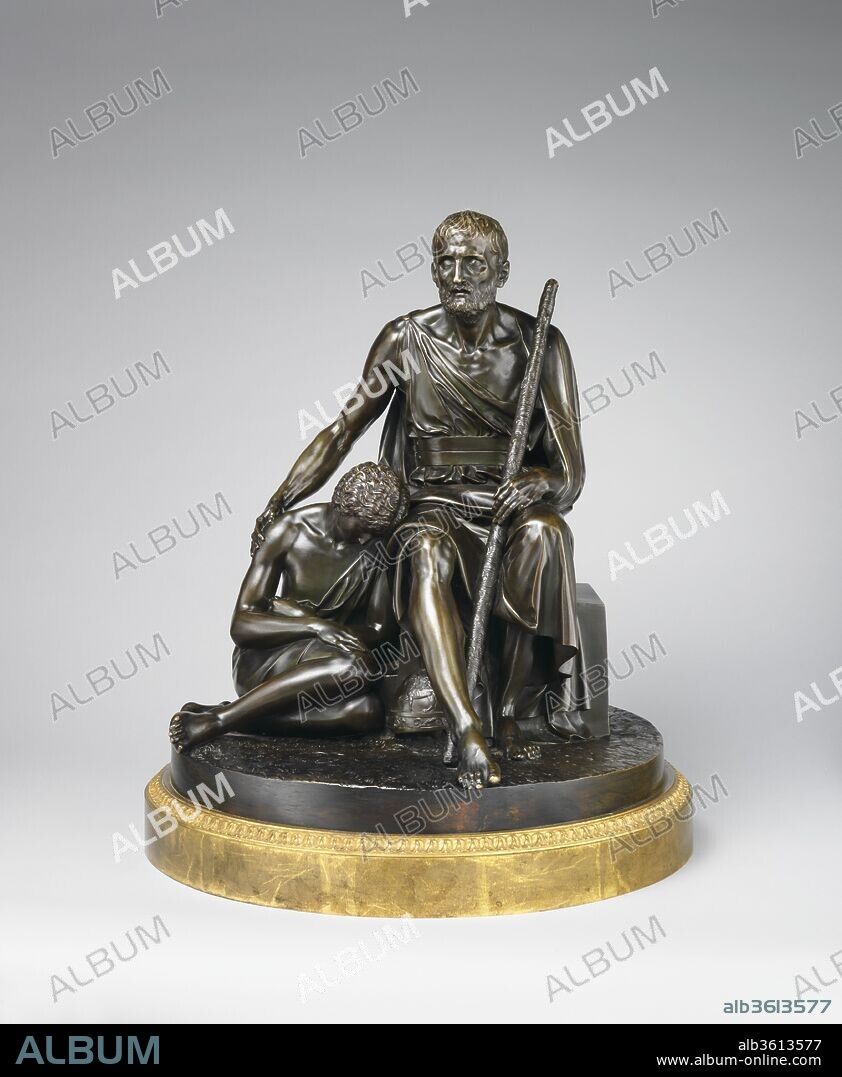alb3613577
ANTOINE DENIS CHAUDET. Belisarius and His Guide

|
Zu einem anderen Lightbox hinzufügen |
|
Zu einem anderen Lightbox hinzufügen |



Haben Sie bereits ein Konto? Anmelden
Sie haben kein Konto? Registrieren
Dieses Bild kaufen

Titel:
Belisarius and His Guide
Untertitel:
Siehe automatische Übersetzung
Belisarius and His Guide. Artist: Antoine Denis Chaudet (French, Paris 1763-1810 Paris). Culture: French, Paris. Dimensions: H. 18 in., D. 14 3/8 in. (47.5 x 36.6 cm). Date: 1794.
The popularity of the victorious sixth-century Byzantine general Belisarius aroused the jealous wrath of his emperor Justinian to the point that he had Belisarius imprisoned, then blinded and turned loose to beg for his living. Antiroyalist elements in French society found parallels in the court of Louis XVI, which was coming under increased criticism. When the terracotta model for this group was exhibited at the Salon of 1791, the sentimental Neoclassical public surely relished its pathos and the contrast between the forms of the sightless but ever-proud mendicant and his weary young guide. The quality of the bronze's chasing led early commentators to suppose Chaudet carried it out himself, but more likely he turned to a professional foundry for the expertise needed to give the metal its dazzling range of surfaces. The Neoclassical age sometimes had unexpected kinetic moments: fitted within the unpatinated base is the original turntable on which the group can be revolved so as to be appreciated from every angle.
Technik/Material:
Bronze, mounted in a bronze circlet with floral ornament painted to resemble gilt bronze, into which is fitted the original rotating mechanism
Museum:
Metropolitan Museum of Art, New York, USA
Bildnachweis:
Album / Metropolitan Museum of Art, NY
Freigaben (Releases):
Model: Nein - Eigentum: Nein
Rechtefragen?
Rechtefragen?
Bildgröße:
3453 x 4200 px | 41.5 MB
Druckgröße:
29.2 x 35.6 cm | 11.5 x 14.0 in (300 dpi)
Schlüsselwörter:
 Pinterest
Pinterest Twitter
Twitter Facebook
Facebook Link kopieren
Link kopieren Email
Email
